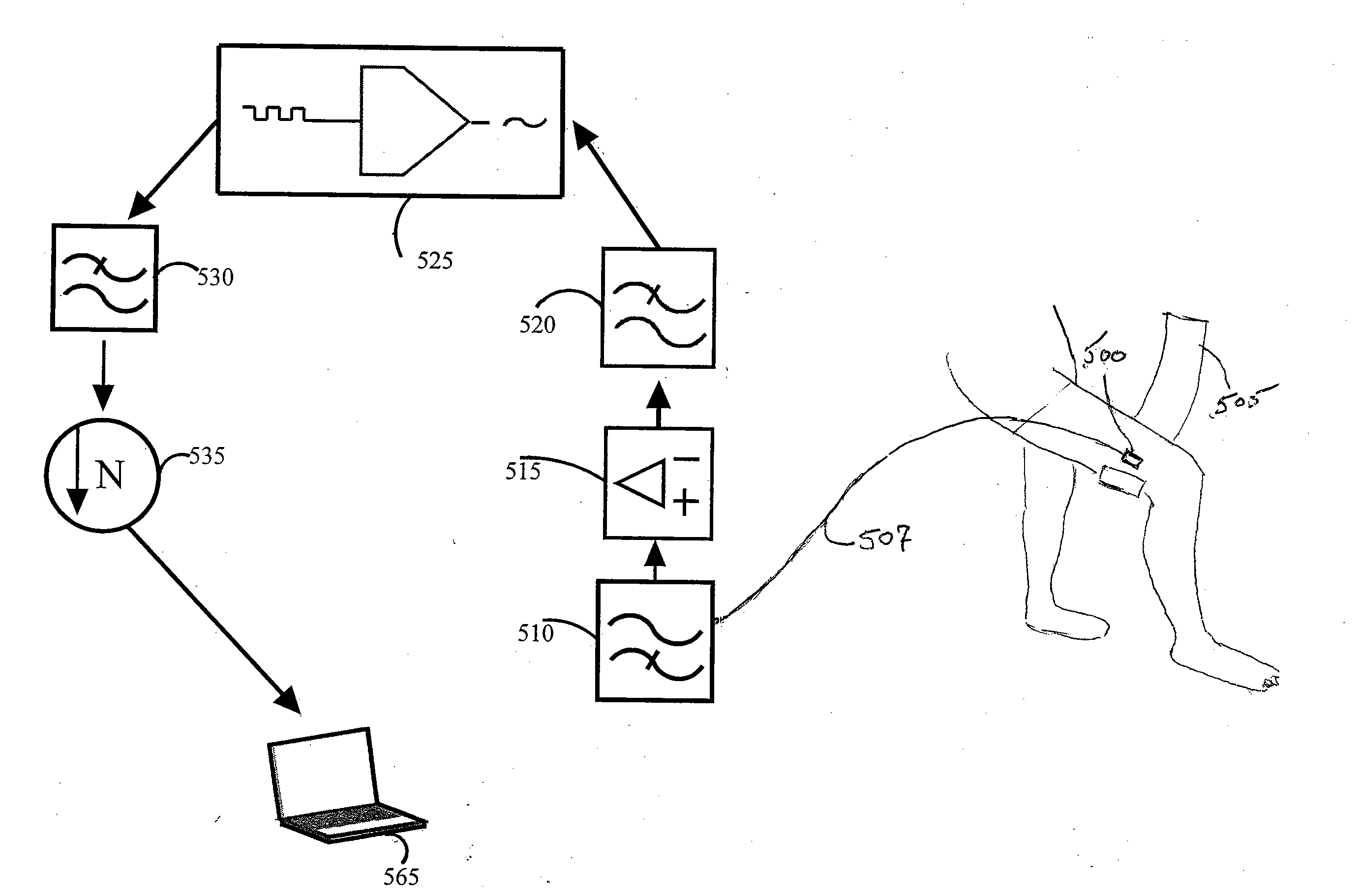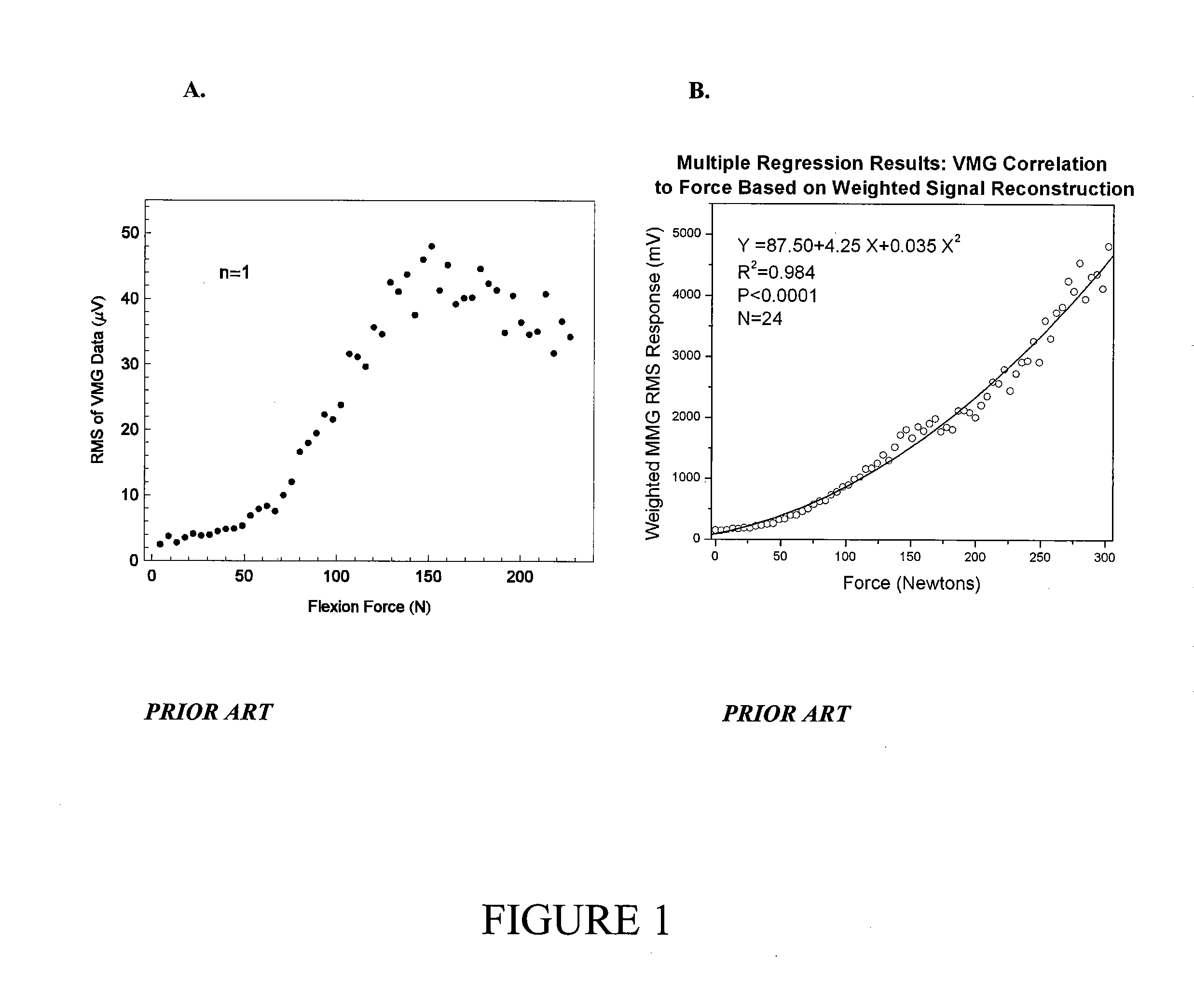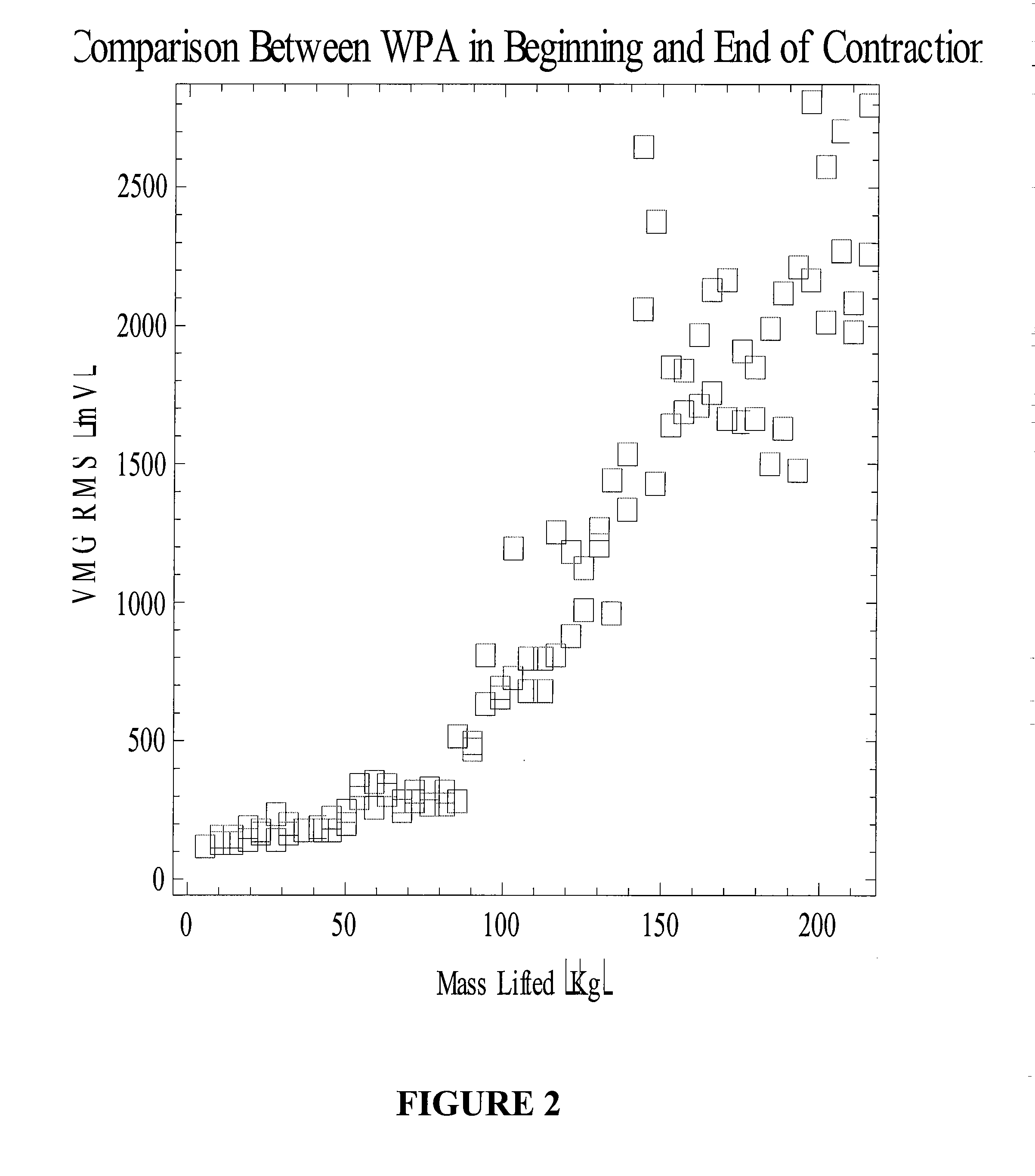Real-time assessment of absolute muscle effort during open and closed chain activities
a closed chain activity and absolute muscle effort technology, applied in the field of wavelet transform to vibromyographic, can solve the problems of significant limitations, relatively crude estimates of muscle effort during dynamic muscle activity, and significant limitations of semg in this respect, and achieve the effect of diagnosing musculo-skeletal injuries and pains
- Summary
- Abstract
- Description
- Claims
- Application Information
AI Technical Summary
Benefits of technology
Problems solved by technology
Method used
Image
Examples
example 1
[0258]Wavelet Packet Analysis of VMG During Isometric Contraction. Muscle fibers in uni-pinnate muscle are not aligned with the direction of pull, and in bi-pinnate muscles the relationship between fiber motion and net muscle force may be even more complex. To eliminate this confounder, one may record from the brachioradialis, a non-pinnate muscle of the forearm muscle which is readily accessible to VMG recording, and relatively powerful, so that a wide force range can be studied. The biceps brachii and the brachioradialis are synergists for elbow flexion-extension with the brachioradialis acting as a strong elbow flexor when the radioulnar joint is in a mid-position between supination and pronation. When the VMG was recorded from the brachioradialis disposed in this position during stationary dynamic constant external resistance (DCER) contractions from 0 to 100% maximum flexion force (MFF), and the data were subjected to WPA (to separate components of the VMG) and to linear regres...
example 2
[0278]Wavelet Packet Analysis of VMG During Motion.
[0279]A micro-electro-mechanical accelerometer was utilized as the muscle vibration sensor. A Kistler™ Model 8305A, which has a working range of about ±2 g (g=9.8 m / s2) over a 500 Hz bandwidth; sensitivity of 500 mV / g, and noise density of 20 μg / Hz1 / 2 was used. In one case, the noise floor, i.e., the square root of required bandwidth times the noise density, was <300 μg. To achieve even lower noise floors, the Silicon Devices Model 1221L-002 accelerometer was used.
[0280]Closed chain activities typically involve large limb and muscle motions. An accelerometer attached to the skin above a muscle body undergoing assessment will detect such motions, but they only mask the small, high frequency vibrations that embodiments of the present invention utilize to directly assess muscle effort. A generally advantageous step in obtaining reproducible closed chain muscle effort evaluations using VMG, therefore, is the suppression of the various h...
example 3
Calibration Factor Obtained for SDI Model 1221L-002 (+ / −2 g) Accelerometer Chip
[0289]To find a calibration factor for use in expressing VMG muscle effort data in terms of force units, subjects in supine position, forearm parallel to floor, upper arm perpendicular to floor. An SDI model 1221 L-002 accelerometer was pressed against the triceps muscle according to an embodiment of the invention. Accelerometer data were acquired and processed as described above during contractions against loads of 0-22.5 lbs. Load forces on the triceps were computed by treating the elbow as fulcrum and the forearm as lever.
[0290]Regression analysis of the relationship between measured load force and the magnitude of the envelope of the wavelet packet-analyzed vibromyographic data acquired from each of 4 males (where a value>two standard deviations above the envelope mean was defined as the characteristic magnitude) was performed. The results, shown in FIG. 20, indicate that VMG conversion factorequals a...
PUM
 Login to View More
Login to View More Abstract
Description
Claims
Application Information
 Login to View More
Login to View More - R&D
- Intellectual Property
- Life Sciences
- Materials
- Tech Scout
- Unparalleled Data Quality
- Higher Quality Content
- 60% Fewer Hallucinations
Browse by: Latest US Patents, China's latest patents, Technical Efficacy Thesaurus, Application Domain, Technology Topic, Popular Technical Reports.
© 2025 PatSnap. All rights reserved.Legal|Privacy policy|Modern Slavery Act Transparency Statement|Sitemap|About US| Contact US: help@patsnap.com



